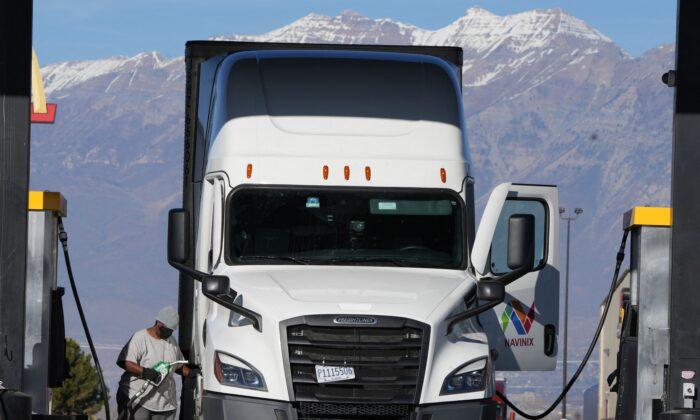The index dropped to 67.1 in May, the second straight monthly decline from the record of 76.2 reached in March with rapidly rising warehouse and inventory costs outpacing slower growth in transportation prices.
The inventory growth rate fell to 69.3 for a third month from February’s record high of 80.2, as transportation capacity expanded for the second month after contracting two years in a row in a tight trucking market due to the pandemic.
The April LMI’s Transportation Capacity metric shifted from contraction to expansion for the first time since June 2020, which indicated that there was more transportation capacity available than from the month before.
The rate of growth for April is up 23.7 points from April 2021, but down 5.3 and 14.1 points from the same time in 2020 and 2019 respectively.
The report cites the 56.1 percent rise in U.S. PMI levels after the dip in April and March, as a sign of expansive economic growth.
Survey respondents predict moderate rates of expansion for the transportation industry, with a possible slowdown down the line, but they do not expect a return to the rapid gains of 2021.
“We are still observing a healthy rate of growth in transportation, but one that pales in comparison to the unsustainable growth rates observed in 2021.”
This comes as the shipping industry copes with an experienced trucker shortage and the highest average diesel prices in decades, at $5.684 a gallon, which is not expected to ease until more crude oil probably becomes available around 2023, say supply experts.
The increase in trucking capacity has pushed transportation costs to their lowest levels since June 2020, allowing the industry to expand, despite a predicted rise in shipping prices over the next year, according to the survey.
“The intensity is much lower and is now approaching levels last seen two years ago,” said the report and that “fortunately, in a world of bottlenecks, transportation seems to be opening back up.”
Warehousing and inventories are continuing to grow at a “similar pace to the one we have observed over the last 18 months,” said the report, as inventory levels are “unseasonably high, packing warehouses to the gills and driving costs up for both inventory and warehousing.”
The trucking, warehousing, and delivery markets gained 32,900 jobs in May, down slightly from 44,700 in April.Trucking companies accounted for 13,300 jobs in May, with a total gain of over 70,000 in the past year, with some of the increase partially coming from owner-operators signing on with larger firms that are less vulnerable to diesel costs and slides in the spot market.
Smaller carriers tend to have difficulty with higher fuel prices, as they are more limited in their ability to purchase diesel fuel at wholesale prices.
The warehousing and storage sectors added 17,700 in May, for a total of 176,700 new positions through the first five months of 2022.
Except for the dip in March, the transportation sector has added jobs every month since April 2020.





